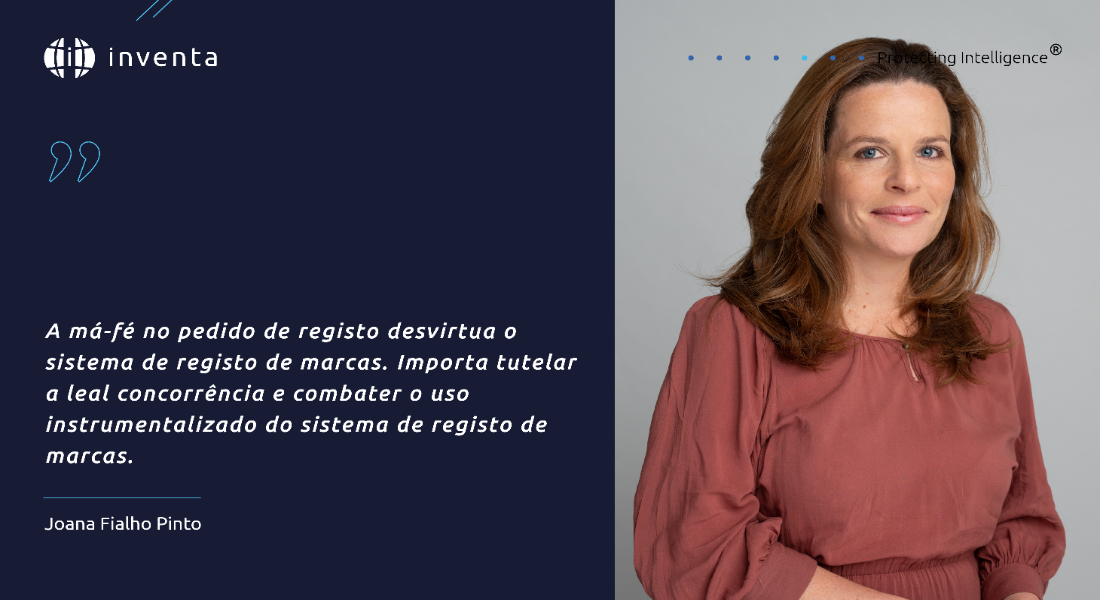
Trademark applications made in bad faith
(Article originally written in Portuguese)
Important compromise on interpretation in the EU
In March 2024, the European Union Intellectual Property Offices that are part of the European Union Intellectual Property Network (EUIPN) published a Common Communication on Trademark Applications Made in Bad Faith, establishing yet another understanding aimed at increasing legal certainty and predictability of decisions.
Directive (EU) 2015/2436 of the European Parliament and of the Council of 16 December 2015 to the approximation of the laws of the Member States relating to trademarks expressly states that bad faith on the part of the applicant in the application for registration of a trademark constitutes grounds for invalidity of the registration, leaving it optional for the Member States to provide for bad faith in the application as grounds for refusal of registration.
However, EU legislation does not define the concept of bad faith in trademark applications, nor does it specify factors to be considered for the integration of such a concept.
The Court of Justice has already recognised the concept of "bad faith" as an autonomous concept of EU law that must be given a uniform interpretation in the European Union (see Malaysia Dairy case, ECLI:EU:C:2013:435) and has issued successive decisions that guide the interpretation of the concept of bad faith in trademark law.
The determining moment of bad faith is the time of the application for registration, and regardless of the passage of time or transfer, the registration always remains vulnerable to invalidity if the application was made in bad faith.
Nevertheless, considering the observed lack of uniformity and disparate interpretations regarding bad faith in applications for trade mark registration in the Member States that were already assessing this ground, the EUIPN presents the common communication with harmonised practice for assessing this ground for invalidity of registration.
The following understandings resulting from this Common Communication stand out:
The applicant is presumed to be in good faith, and those invoking bad faith bear the burden of proof by demonstrating objective circumstances that allow bad faith to be established.
The determining moment of bad faith is the time of the application for registration, and regardless of the passage of time or transfer, the registration always remains vulnerable to invalidity if the application was made in bad faith.
The dishonest intention of the applicant is a mandatory factor that must always be verified to establish bad faith.
Without excluding that there may be others, in the common communication two different facets of bad faith are highlighted, with examples referring to court decisions in which (not always having been verified in the case) bad faith was discussed:
1. The intention to misappropriate rights of a third party:
- Parasitising and taking advantage of a third party's prior right(s) (with reference, among others, to the NEYMAR EU:T:2019:329 case);
- Usurping the trade mark rights of a third party;
- Creating a false impression of continuity of inheritance between the trade mark that has been applied for in bad faith and a historical trade mark that previously was renowned, or of a famous previous entity or right, which the relevant public is still aware of.
2. Misuse of the trade mark system
- Preventing the registration of a third party's trade mark and/or obtaining economic advantage from such a blocking position;
- Strengthening the protection of the applicant's own rights, and extending the trade mark portfolio without any honest commercial logic;
- Avoid furnishing evidence of use of earlier registered trade mark(s) and extend the 5-year grace period (here with reference to the Monopoly case (EU:T:2021:211) in which the party itself recognised that it had adopted this registration strategy);
- Avoiding the consequences of the invalidation of a registration (for example following the expiry of a trade mark registration due to lack of genuine use).
Bad faith in filing applications distorts the trademark registration system. It is important to protect fair competition and to combat the instrumentalization of the trade mark registration system.
Guiding examples of factors that may be relevant to the assessment of bad faith in the specific case are also listed: the applicant's prior or presumed knowledge that a third party is using or has an identical or similar prior right, the degree of legal protection of a third party's prior right, the identity or similarity between the trade mark applied for and the prior right(s), the product(s)/service(s) in question, the likelihood of confusion, the prior relationship between the parties (where the relationship is interpreted broadly to include e. g. informal relationships), the origin of the trade mark applied for and its use since its creation, the honest commercial logic behind the trade mark application, and the trade mark application. g. informal relationships), the origin of the mark applied for and its use since its creation, the chronology of events leading up to the application for the contested mark, the honest commercial logic behind the application for the mark, whether there has been a request for financial compensation (if the application was made with the intention of extorting money) and the pattern of the applicant's behaviour or actions.
It is recognised that this list of eleven factors is not exhaustive and that the verification of one or more of the factors does not necessarily imply the existence of bad faith, which always requires the dishonest intent of the applicant.
In view of the above, we can see that the assessment of bad faith in a trade mark application requires a detailed analysis of the specific case, following the interpretative case law of the Court of Justice. In cases where bad faith is invoked, the decision-maker will have to take into account the entire context of the dispute and decide on the basis of the evidence in the case and the interpretative criteria of the Court of Justice, and cannot, for example, limit himself to general considerations and decide on the basis of who first applied to register a trademark.
Bad faith in filing applications distorts the trademark registration system. It is important to protect fair competition and to combat the instrumentalization of the trade mark registration system. The implementation of this common communication is welcomed to make the assessment of bad faith effective, consistent and predictable in the different Member States, without prejudice to the fact that it will always be assessed on a case-by-case basis.
Currency Info
Final charges will be made in USD.
Currency conversion is for information purposes only and accuracy is not guaranteed. Overseas customers are encouraged to contact their bank or credit card provider for details on any additional fees these institutions may include for currency conversion.
Territory List
There are no results for your search.
- Africa
- Algeria
- Angola
- Benin
- Botswana
- Burkina Faso
- Burundi
- Cameroon
- Cape Verde
- Central African Republic
- Chad
- Comoros
- Congo (Republic)
- Côte d'Ivoire
- Democratic Republic of the Congo
- Djibouti
- Egypt
- Equatorial Guinea
- Eritrea
- Eswatini (Swaziland)
- Ethiopia
- Gabon
- Gambia
- Ghana
- Guinea
- Guinea-Bissau
- Kenya
- Lesotho
- Liberia
- Libya
- Madagascar
- Malawi
- Mali
- Mauritania
- Mauritius
- Mayotte
- Morocco
- Mozambique
- Namibia
- Niger
- Nigeria
- Réunion
- Rwanda
- Sao Tome and Principe
- Senegal
- Seychelles
- Sierra Leone
- Somalia
- South Africa
- South Sudan
- Sudan
- Tanzania (mainland)
- Togo
- Tunisia
- Uganda
- Western Sahara
- Zambia
- Zanzibar
- Zimbabwe
- Africa (OAPI)
- Africa (ARIPO)
- Other
- East Timor
- Macao
- Maldives
- Portugal
- European Patent (EPO)
- European Union Trademark (EUTM)
- International Trademark (Madrid System)
- Patent Cooperation Treaty (PCT)




